Refund Guaranteed
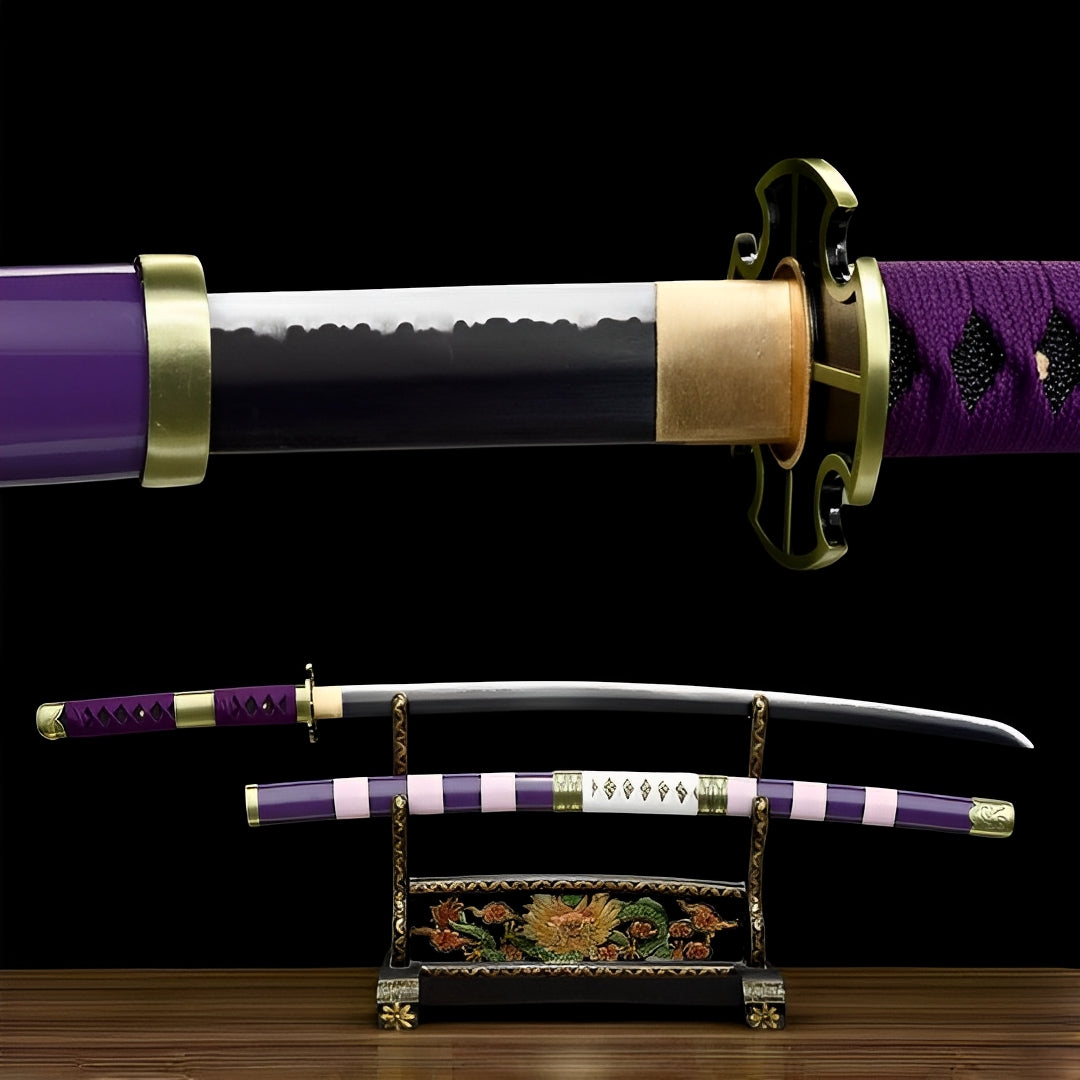

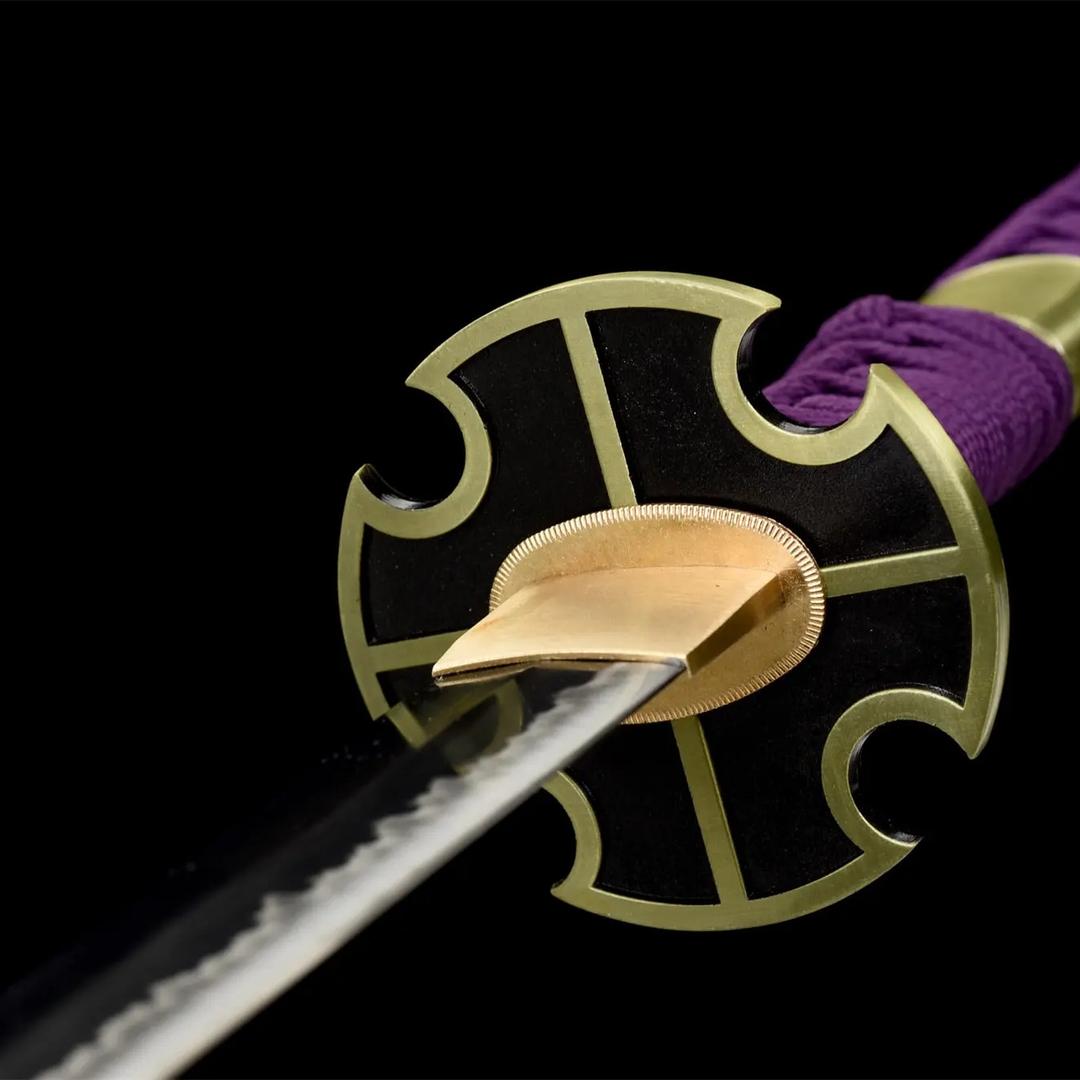
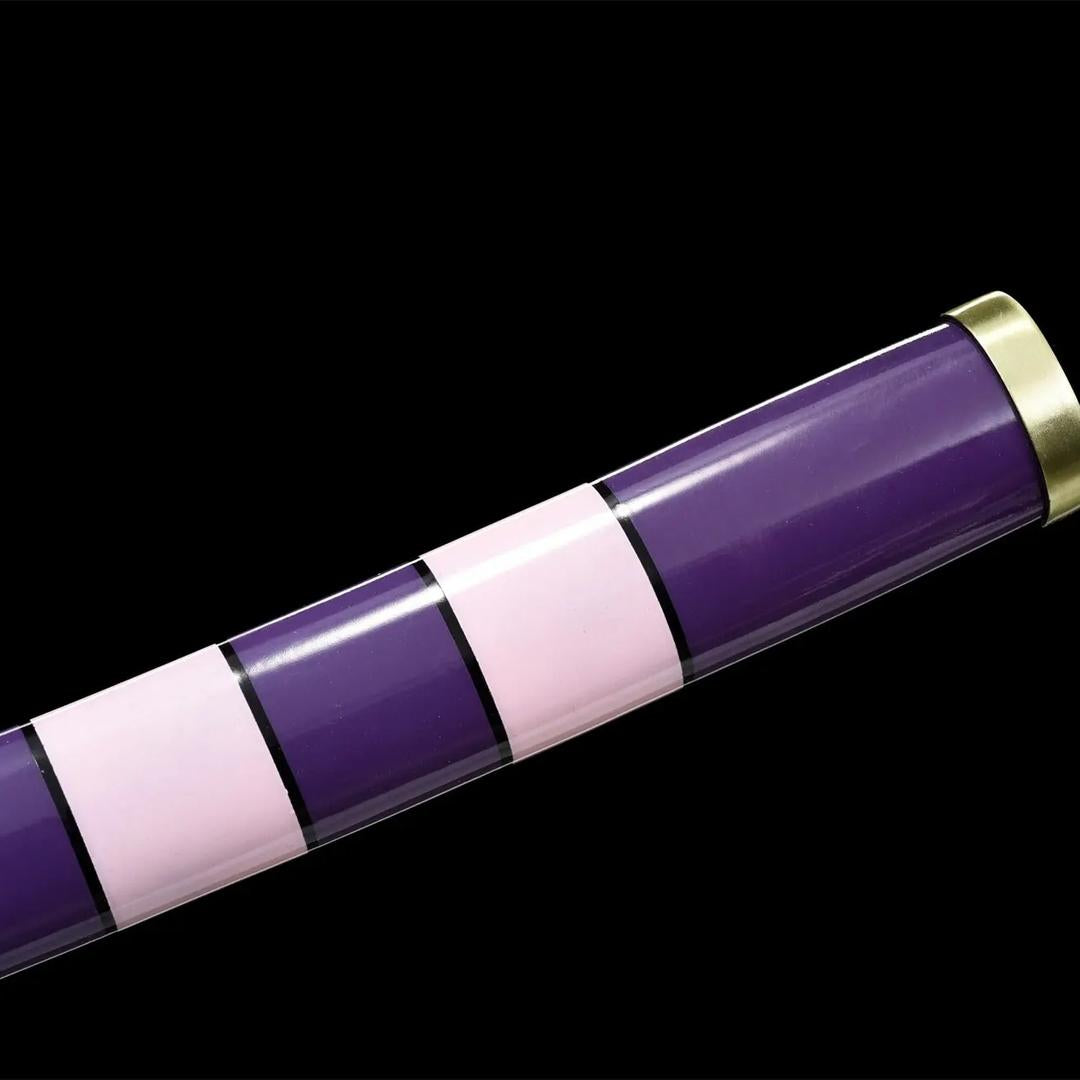
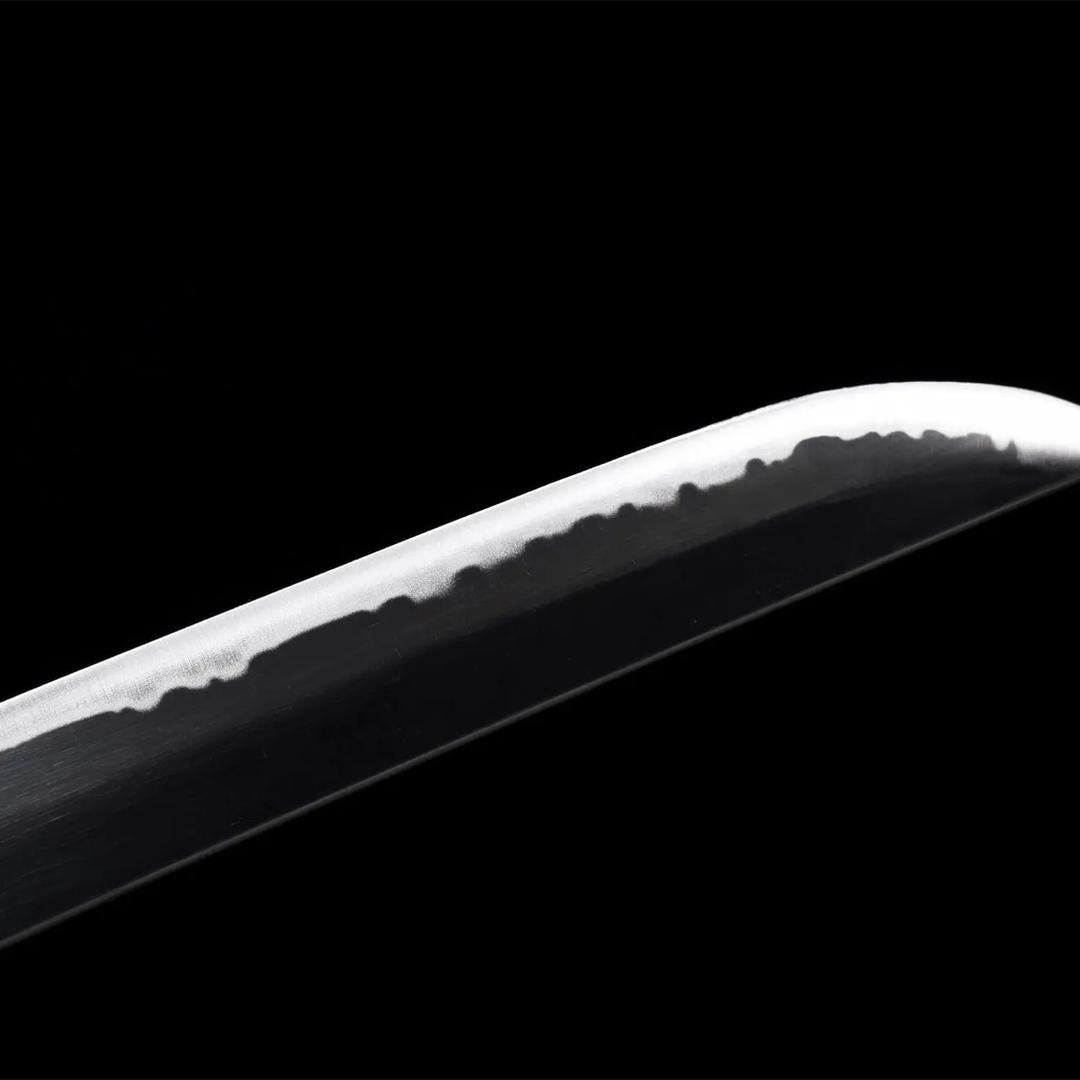
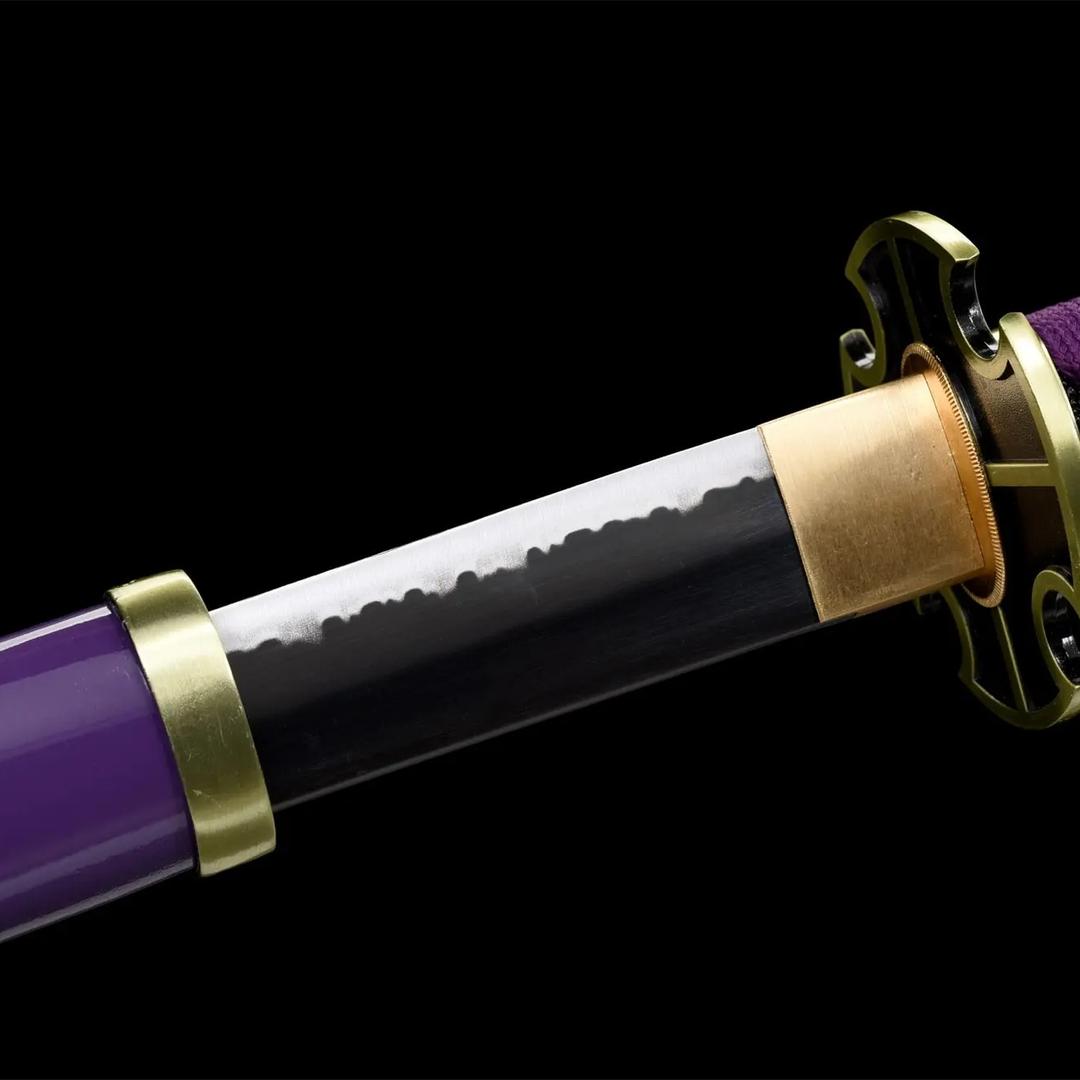


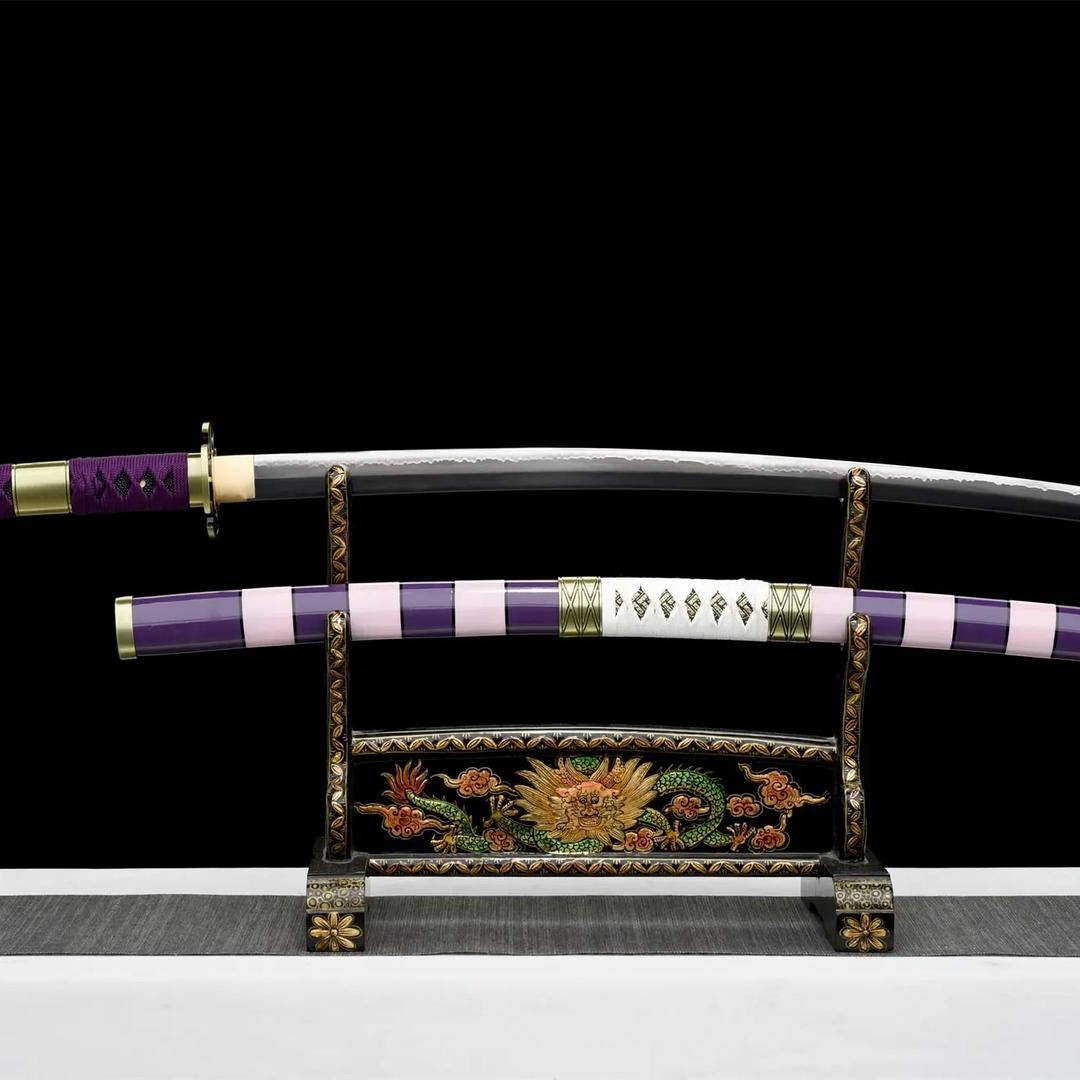
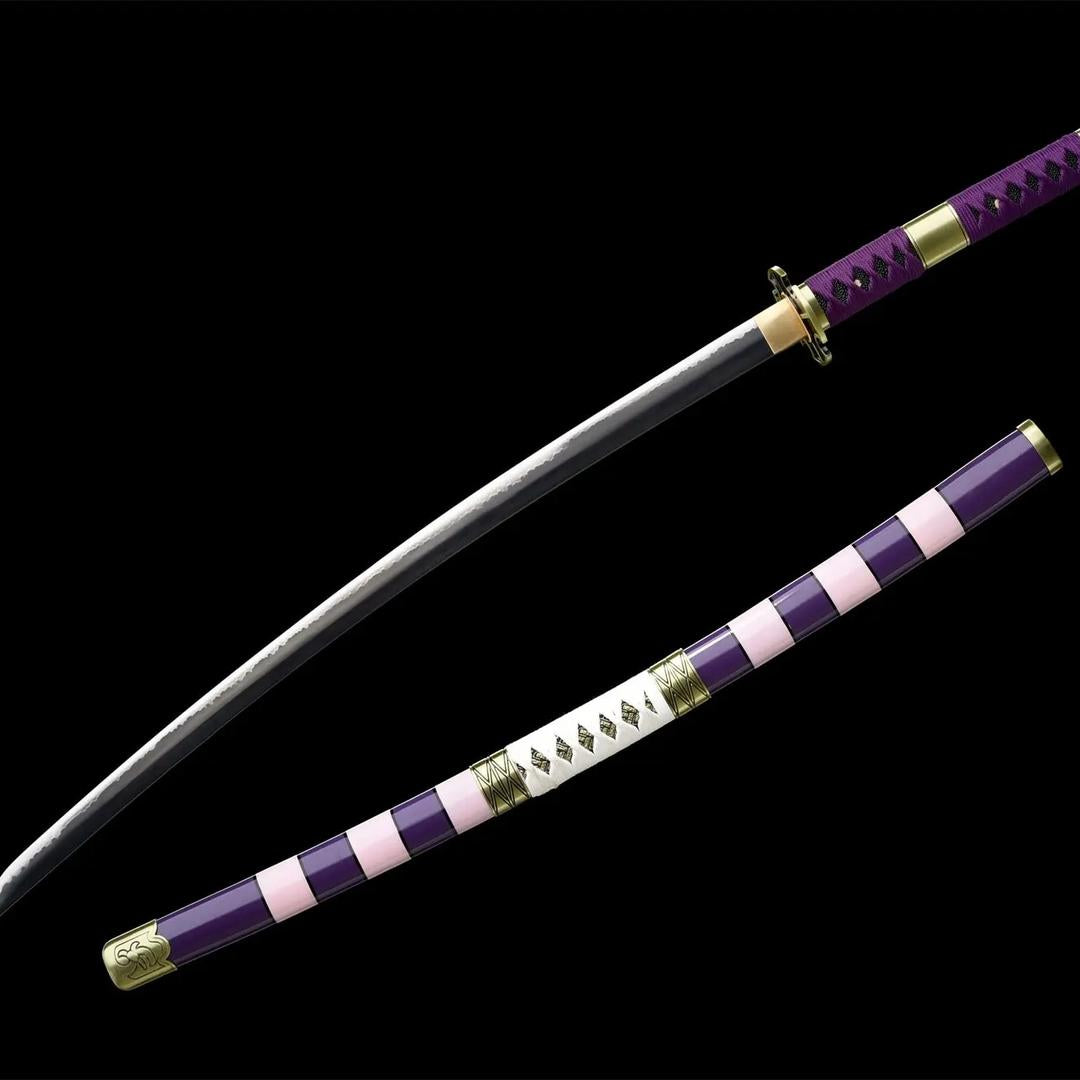
Luffy Nidai Kitetsu Katana (One Piece) - 夕影刀
Included with your order



Note: Engraving placement and orientation may vary by blade model (hamon, geometry, and flat area).
Free Shipping over $250
No Bots, No AI
Refund Guaranteed
Free Shipping over $250
No Bots, No AI
Our team is here to help with any questions or concerns.
We’re always happy to assist you — don’t hesitate to reach out.

Luffy Nidai Kitetsu Katana (One Piece) - 夕影刀
Specifications
- Handmade
- SHARP
- Blade: 1060 Carbon Steel
- SAGEO & ITO in Cotton
- Synthetic Rayskin
- Full Tang
- Iron Tsuba
- Total size: 105cm / 41 (in)
- Blade size: 72cm / 28 (in)
- Blade width: 3,2cm / 1.2 (in)
- Blade thickness: 0,7cm / 0.27 (in)
- Handle size: 30cm / 11.8 (in)
Luffy Nidai Kitetsu Katana - Cursed Blade Temptation Legacy
Tempt fate with Nidai Kitetsu, sword that kills its wielders without remorse. This malevolent cursed One Piece blade defies safe collecting - purple depths suggesting poison and corruption seeping through steel, white bands marking warnings previous owners ignored to their doom, the entire weapon radiating malice proving some swords actively hunger for their wielders' deaths. Not tool serving warrior but predator wearing sword's shape, second-generation Kitetsu's curse weaker than first yet stronger than third, asking whether you possess luck surviving what blade forges into your spine the moment hubris makes you believe you've tamed it.
The Kitetsu Curse Legacy
Three Kitetsu blades exist across One Piece's world, each forged by different generation of cursed swordsmith family, each carrying death sentence for wielders. Shodai Kitetsu (First Generation) ranks among supreme grade swords yet no one knows current owner because everyone who wielded it died; Sandai Kitetsu (Third Generation) belongs to Zoro who survived its curse through sheer luck; Nidai Kitetsu occupies middle ground - sharper than Sandai, deadlier than Sandai, its curse more potent yet not quite reaching Shodai's absolute lethality. This middle curse blade represents perfect balance between power and danger, tempting enough seeming survivable yet deadly enough killing most who try.
The curse isn't metaphorical - Kitetsu blades actively attract calamity, their wielders experiencing disproportionate misfortune, accidents that shouldn't happen, enemies appearing from nowhere, betrayals at worst moments. Weapon shop owners refuse selling them despite O Wazamono grade quality, previous owners' fates serving as permanent warnings that some bargains cost more than any benefit justifies.
Luffy specifically encountered Nidai Kitetsu during Wano arc, briefly holding it before Tenguyama Hitetsu (the swordsmith preserving it) reclaimed the blade. That moment crystallized Luffy's character - he could've kept legendary sword but didn't because he's not swordsman, the weapon serving no purpose for fighting style based on Devil Fruit powers and Haki-infused punches. That restraint demonstrates wisdom; taking powerful cursed weapon you can't properly wield invites disaster.
The temptation blade concept specifically explores how cursed items work psychologically - they wouldn't be dangerous if no one wanted them, the power they offer must seem worth the risk or curse serves no function. Nidai Kitetsu's O Wazamono grade ensures it cuts better than most swords worldwide, that temptation making curse work: people convince themselves they'll be exception, that their skill/luck/worthiness exempts them from fate claiming previous owners.
Collectors appreciating dark narratives recognize cursed weapons as exploring uncomfortable truths: sometimes power comes with costs, sometimes temptation leads to destruction, sometimes smartest choice is refusing gift that seems too generous. The purple blade becomes meditation on when saying "no" demonstrates greater strength than saying "yes."
Purple Malevolence Manifestation
The deep royal purple creates this blade's most unsettling feature - color historically associated with both nobility and poison, with imperial authority and toxic corruption, with spiritual transcendence and physical rot. This poison purple sword channels that duality perfectly, the beautiful violet surface hiding deadly nature beneath, the elegant coloration warning rather than celebrating.
Specifically, purple suggests the curse made visible - if malevolent force could choose color announcing itself, it would choose purple combining blue's false calm with red's true danger, creating hue that attracts even while warning. Traditional poison bottles used purple glass specifically because color communicated "dangerous contents" while remaining beautiful enough people couldn't resist examining closer. The warning beauty blade operates identically: purple says "danger" yet also says "magnificent," creating fatal contradiction where aesthetic appeal overrides survival instinct.
The cultural associations particularly suit cursed object - purple dyes historically required extensive processing from rare sources (Tyrian purple from sea snails), the difficulty and expense making color exclusive to those who could afford it yet also making it symbol of excess, of pursuing luxury beyond reason, of wanting what you can't safely have. Nidai Kitetsu's purple becomes metaphor for that doomed pursuit: yes, it's beautiful; yes, it's powerful; yes, it will kill you.
Unlike Enma's purple suggesting royal testing or Ame no Habakiri's purple indicating shogun authority, this purple specifically communicates corruption - the beauty that hides rot, the elegance masking malice, the attractive surface concealing fatal interior. That distinction matters: not all purple carries identical meaning; context determines whether purple elevates or warns.
Striped Warning Pattern
The alternating purple-white bands create visual rhythm suggesting prison bars, warning barriers, hazard stripes - the pattern itself screaming "danger" through design language predating written warnings. This hazard stripe blade uses color psychology where alternating bands trigger instinctive caution, the pattern communicating "pay attention, threat present, proceed carefully" without requiring literacy or cultural knowledge.
Specifically, white interrupting purple creates psychological disruption - viewers' eyes can't settle, the stripes forcing constant re-evaluation, the pattern never allowing comfortable familiarity. That visual discomfort serves function: cursed blade should make you uncomfortable, the weapon refusing letting you forget its nature through becoming familiar background object.
Traditional Japanese sword aesthetics rarely featured bold stripes preferring subtle patterns, natural materials, restrained decoration. The aggressive striping therefore marks this blade as exception, as weapon that doesn't follow normal rules, as object announcing through appearance that conventional expectations don't apply. The rule-breaking pattern becomes warning itself: if sword violates aesthetic conventions, what other rules does it ignore? If it refuses fitting expected categories, why would it respect boundaries between tool and threat?
The spacing specifically matters - not thin delicate stripes creating elegance but bold substantial bands impossible ignoring, the white sections substantial enough qualifying as features rather than accents. That aggressive patterning prevents treating blade as subtle decoration; it demands attention, forces acknowledgment, refuses being overlooked.
Second Generation Deadliness
Understanding Nidai requires comparing against its siblings: Shodai Kitetsu kills everyone eventually; Sandai Kitetsu killed many but some survive; Nidai Kitetsu occupies middle ground suggesting "probably fatal but maybe not if you're extraordinarily lucky and skilled." That positioning creates fascinating psychology - it's dangerous enough scaring rational people away yet survivable enough tempting irrational people forward.
The middle curse strength specifically tests human psychology around risk assessment - how much danger is "acceptable" when pursuing powerful tool? Zoro survived Sandai through luck test (throwing blade in air, seeing if it would cut his arm; it didn't, proving his luck exceeded curse's power). But Nidai's stronger curse suggests that same test might fail, that luck sufficient for Sandai proves insufficient for Nidai, that assuming "I survived weaker curse therefore I can survive stronger" commits logic error killing confident fools.
O Wazamono grade specifically means top 21 swords globally excluding only Supreme Grade blades. That quality ensures Nidai cuts better than 99.9% of swords worldwide, making refusal difficult for serious swordsman - yes it's cursed, but it's also potentially best blade you'll ever touch, the temptation becoming almost irresistible for warriors whose entire identity centers on swordsmanship excellence.
Traditional Japanese sword grading considered both technical quality and historical significance; Nidai Kitetsu presumably earned O Wazamono status through perfect forging before curse manifested or because swordsmith's skill was so extraordinary even cursed blade qualified for elite tier. That combination - masterwork cursed to kill its wielders - creates tragic irony: the better the sword, the more it tempts, the more it tempts, the more it kills.
Luck Testing Collection
This fate tempting piece serves specific collector psychology: those fascinated by cursed objects, by items carrying supernatural danger, by cultural narratives where possessing certain things invites disaster. Horror movies, folklore, superstition all explore "cursed item" trope; Nidai Kitetsu brings that narrative element into sword collecting, transforming hobby from safe aesthetic appreciation into engagement with darker themes.
The purple-striped aesthetic photographs dramatically, creating images that work beautifully for darker collection themes, horror-adjacent displays, or collections emphasizing One Piece's more dangerous narrative elements. Unlike cheerful Straw Hat pirate imagery, Kitetsu represents series' acknowledgment that pirate world contains genuine threats, that not all swords serve heroic purposes, that some power comes with unacceptable costs.
Display considerations benefit from leaning into curse theme - darker lighting, isolated positioning away from "safer" swords, perhaps warning placards explaining blade's nature. That theatrical presentation transforms static display into narrative experience, each viewing reminding why this particular sword deserves special respect/fear/fascination.
Investment value specifically favors weapons with strong narrative hooks beyond mere functionality - cursed blade carries story automatically, the purple-white aesthetic ensures memorability, the One Piece connection provides franchise recognition. Those factors combine creating piece that works both for dedicated One Piece collectors and broader sword enthusiasts appreciating dark folklore elements.
The dark narrative blade particularly appeals to collectors who appreciate that not all swords in fiction serve noble purposes, that some weapons exist as warnings rather than aspirations, that fascinating doesn't always mean desirable. Nidai Kitetsu teaches valuable lesson: sometimes best choice is admiring dangerous thing from safe distance rather than possessing it personally.
Care Instructions: Handle this cursed replica understanding it represents temptation best resisted - even replica channels blade's warning philosophy that some things shouldn't be possessed regardless of quality. The purple finish requires protection from UV light preventing fading; maintain warning stripes' stark contrast through careful cleaning. Polish golden fittings carefully - the brass warmth against purple poison creates intentional tension. Display where it serves as conversation piece about cursed objects, about temptation versus wisdom, about knowing when power's cost exceeds benefit. Handle knowing real Nidai Kitetsu killed its wielders; this replica kills nothing but serves reminder that fictional warnings often contain real wisdom. Consider this blade teaching tool: not every beautiful thing deserves owning, not every powerful tool deserves wielding, not every temptation deserves indulging. The curse may be fiction but lesson proves real - sometimes saying "no" to something you want demonstrates greater strength than saying "yes."
Sharp beyond reason. Cursed beyond doubt. Beautiful beyond wisdom. The Kitetsu waits patiently for next fool.
Legal Disclaimer
By purchasing from Katana Corp, you acknowledge and agree that:
- You are at least 18 years of age (or the age of majority in your jurisdiction).
- You are solely responsible for verifying and complying with all local laws and import regulations before placing an order.
- Some countries prohibit the importation of swords entirely. Katana Corp is not responsible for orders delayed, seized, or refused by customs authorities.
- All katanas and related products are sold strictly as decorative and display items. They are not intended or certified for combat use.
- Depending on the jurisdiction, swords may legally be considered bladed weapons, subject to specific restrictions or prohibitions.
- Katana Corp disclaims all liability for any injury, damage, or legal consequences resulting from misuse, abuse, or unlawful use of its products.
For full details, please refer to our Terms of Service.
Care & Maintenance
To maintain your katana's appearance and performance over time, we recommend:
- Regularly wiping the blade with a soft cloth to remove fingerprints and moisture.
- Applying a light coat of choji oil to prevent rust (for carbon steel blades).
- Storing the sword in a dry place, preferably inside its saya.
- Avoiding direct contact with hard surfaces to preserve sharpness and finish.
For more care tips, check our full maintenance guide in the FAQ section.
Behind the Blade
Every katana we offer carries the essence of centuries-old craftsmanship.
More than just a weapon, the katana symbolizes discipline, honor, and mastery.
Our artisans draw inspiration from traditional forging methods to ensure each blade reflects the spirit of the samurai — strength, precision, and soul.
Owning one is not just about aesthetics — it’s about carrying a piece of that legacy.
User Experience
This katana is designed to offer a perfect balance between blade and handle.
Its ergonomic tsuka (handle) allows a secure two-handed grip, while the weight distribution ensures smooth, fluid movement.
Whether for training, display or cutting practice, handling feels natural and precise.

The Art of Traditional Forging
Each katana we craft is born from centuries of samurai tradition.
Our master smiths shape every blade by hand, folding the steel to achieve unmatched strength, flexibility, and beauty.
This time-honored process is not just about creating a weapon? it’s about preserving a legacy of discipline, honor, and artistry.

Materials Chosen Without Compromise
We select only the highest-grade steels and authentic fittings to ensure every katana is both a masterpiece and a reliable companion.
From the flawless hamon line to the perfectly balanced tang, each detail is carefully inspected to meet the highest standards of performance and aesthetics.
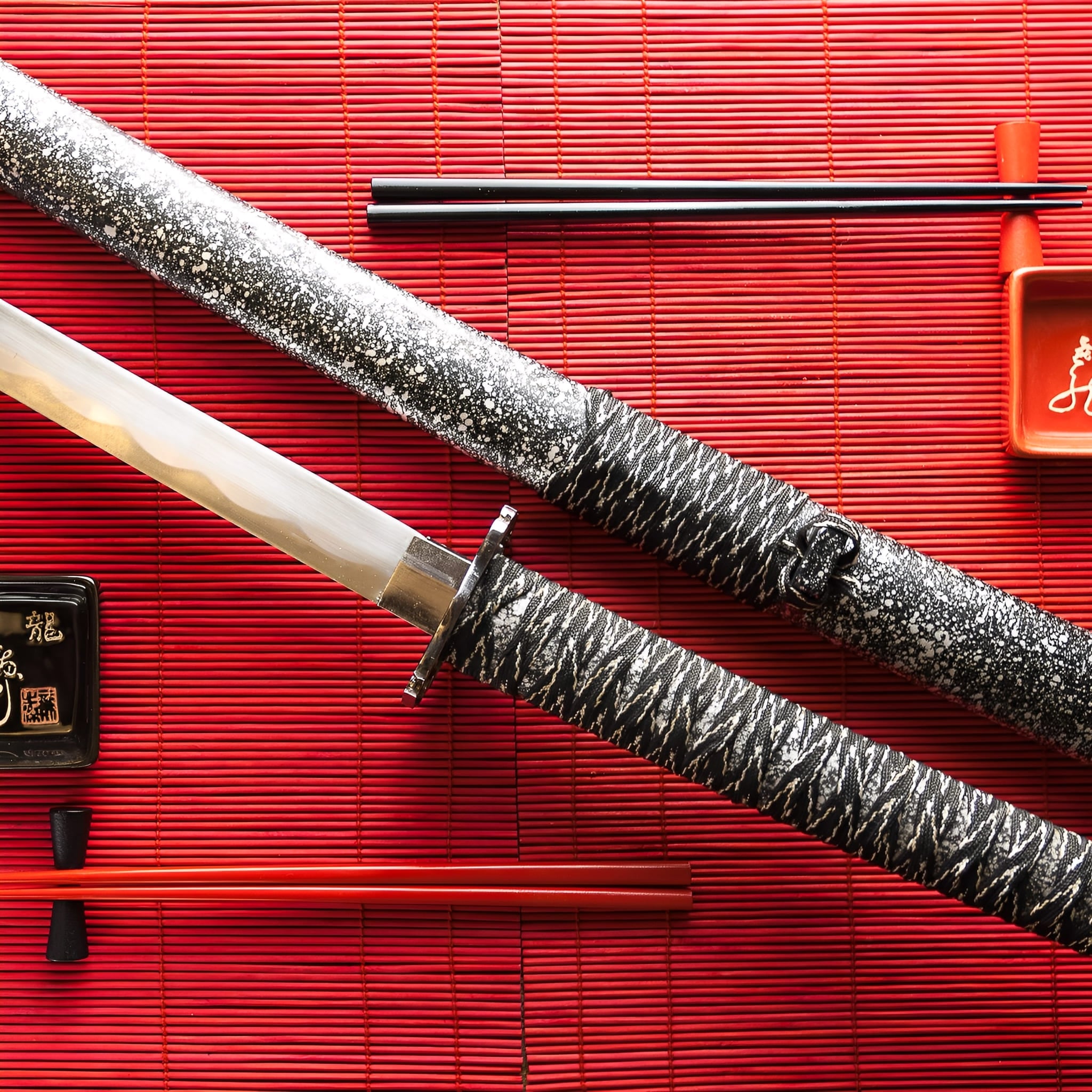
More Than a Sword, A Lifelong Legacy
Owning a handmade katana is an experience that goes beyond the blade itself. It’s holding history, tradition, and craftsmanship in your hands.
Whether displayed as a work of art or wielded with precision, your katana will stand as a symbol of timeless skill and dedication for generations to come.
-
Key Destinations
United States: 5–7 days
Canada: 5–7 days
Australia: 6–9 days
Denmark: 4–6 days
Netherlands: 3–5 days
Sweden: 4–6 days
Switzerland: 3–5 days
Finland: 5–7 days
Singapore: 6–8 days -
Central European Partners
France: 2–3 days
Germany: 3–5 days
Spain: 4–6 days
Italy: 4–6 days
Belgium: 3–5 days
Austria: 4–6 days
Ireland: 4–6 days
Poland: 4–6 days
Portugal: 4–6 days -
Extended EU Network
Czechia: 4–6 days
Hungary: 4–6 days
Slovakia: 4–6 days
Slovenia: 5–7 days
Romania: 5–7 days
Bulgaria: 5–7 days
Croatia: 5–7 days
Serbia: 5–7 days
Estonia: 5–7 days
Latvia: 5–7 days
Lithuania: 5–7 days
Luxembourg: 3–5 days
Greece: 5–8 days -
FAQ’s
Visit our FAQs page to find answers to common questions.